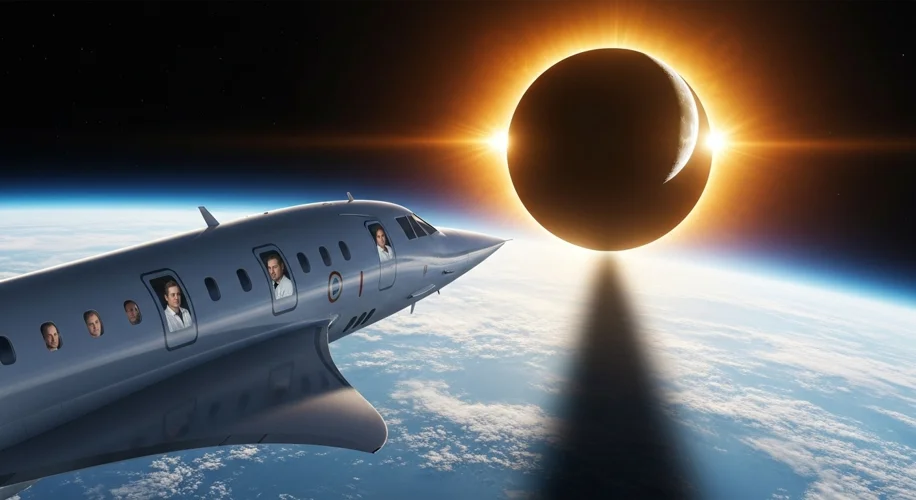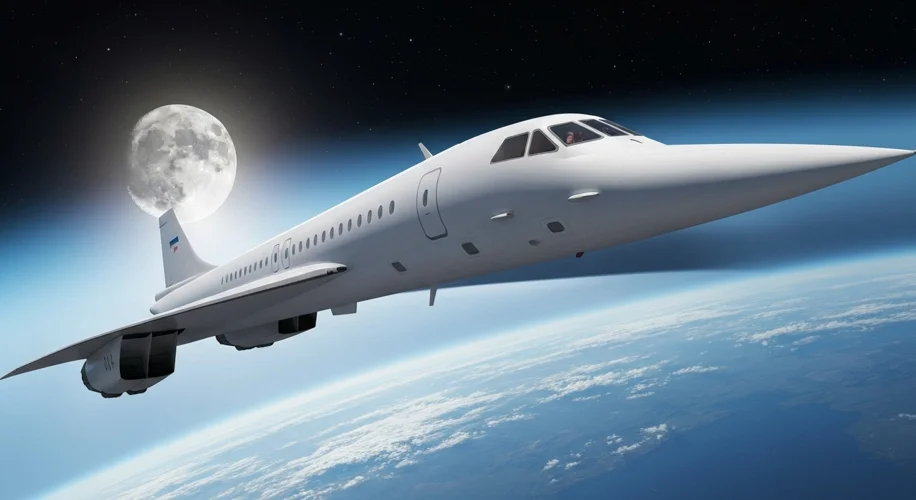Imagine standing on a mountaintop, the world around you slowly succumbing to an unnatural twilight. The air grows still, a hush falls over nature, and the sun, that ever-present life-giver, begins its slow, inexorable disappearance behind a dark disk. This is the magic of a total solar eclipse. Now, imagine extending that moment, not by minutes, but by over an hour, witnessing the sun’s ethereal corona in all its glory from a perspective never before achieved.
On June 30, 1973, this extraordinary feat became reality. Aboard the sleek, supersonic Concorde 001, a select group of scientists and engineers embarked on a mission not to conquer distance, but to prolong a celestial spectacle. Their goal: to chase the path of totality for a solar eclipse, aiming to keep the darkened sun visible for as long as humanly possible.
The year 1973 was a time when supersonic travel was no longer a futuristic dream but a breathtaking reality. Concorde, the Anglo-French marvel of aviation, represented the pinnacle of engineering, capable of speeds exceeding Mach 2, or roughly 2,500 kilometers per hour (1,550 mph). This remarkable speed, combined with the aircraft’s high altitude cruising capabilities, provided a unique advantage for eclipse observers.
Normally, the path of totality for a solar eclipse, known as the path of totality, is a narrow band that sweeps across the Earth’s surface at incredible speed. For ground-based observers, the maximum duration of totality is typically around seven minutes. However, by flying Concorde 001 along the same trajectory as the moon’s shadow, scientists aimed to “outrun” the shadow’s movement relative to the Earth’s surface. The result was astonishing: a record-breaking 74 minutes of continuous observation of the sun’s corona.

The scientific implications of this extended observation were immense. The sun’s corona, a faint halo of plasma that surrounds the sun, is usually only visible during the brief moments of totality. Its study is crucial for understanding solar flares, coronal mass ejections, and the very dynamics of our star, which directly influence space weather and can impact Earth’s technology and infrastructure. Having a stable, high-altitude platform like Concorde 001 allowed for unprecedented, prolonged data collection. Instruments could be calibrated, observations refined, and subtle phenomena captured with a clarity and duration previously unimaginable.
The mission was more than just a scientific endeavor; it was a testament to human ingenuity and our unyielding curiosity about the cosmos. The passengers aboard Concorde 001 were not merely spectators but active participants in a grand scientific ballet, their eyes, and their instruments, fixed on the heavens. They were witnesses to a moment where cutting-edge technology intersected with the ancient awe inspired by a darkened sun.
The success of the Concorde 001 eclipse flight wasn’t just about setting a record. It demonstrated the potential of supersonic aviation for scientific research, paving the way for future high-speed atmospheric and astronomical studies. It provided invaluable data that contributed to our understanding of solar physics and the complex relationship between the sun and Earth. More than that, it captured the imagination, offering a fleeting, yet profound, glimpse into the universe from a vantage point that felt almost otherworldly, a true fusion of human ambition and celestial wonder.

